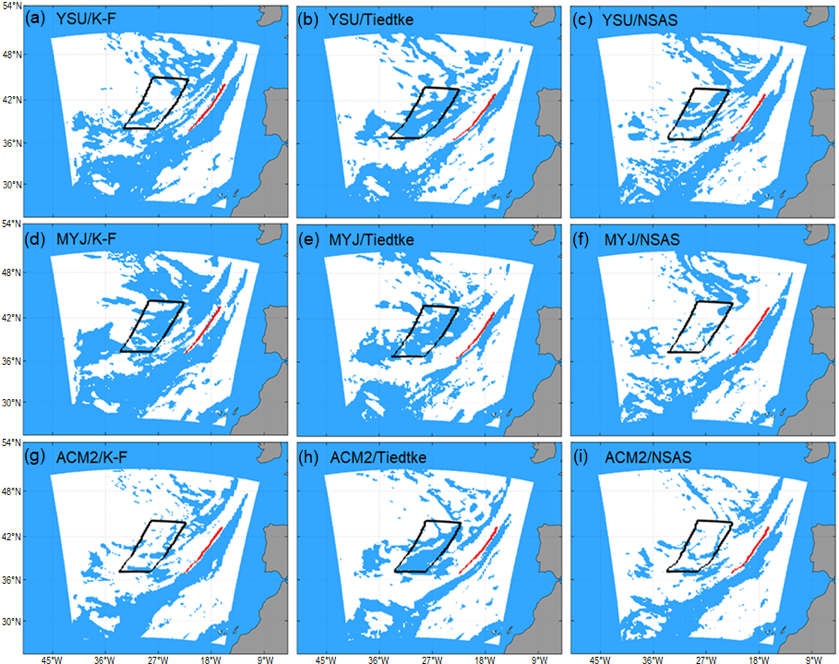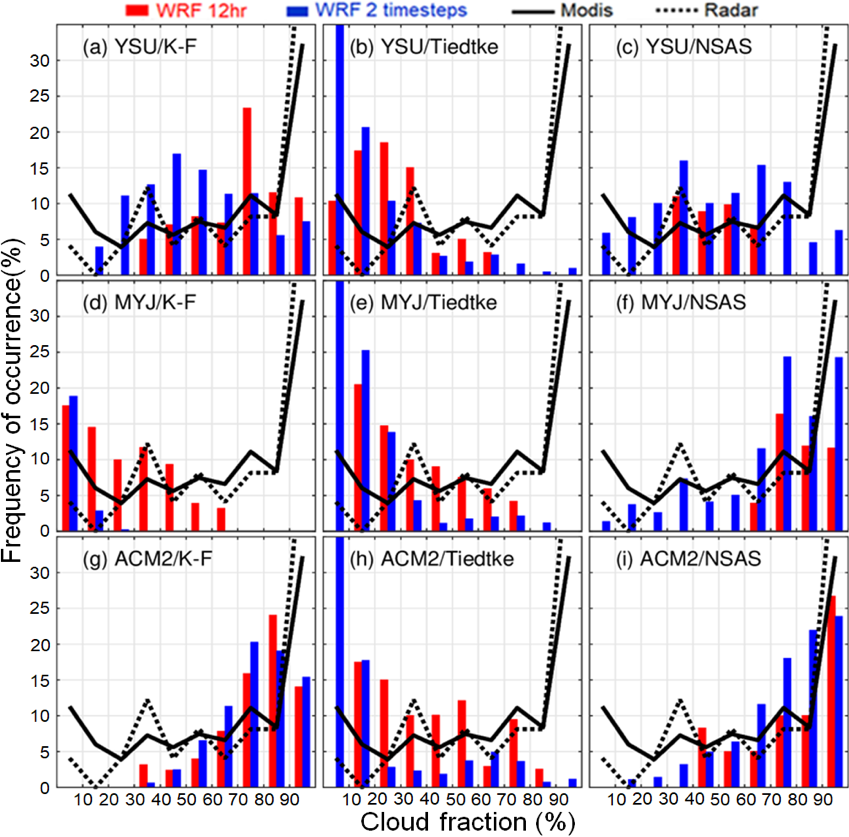Shallow convection and boundary-layer fluxes: The parameterization of post-cold-front clouds
Submitter:
Booth, James — City College of New York
Naud, Catherine M. — Columbia University
Area of research:
Cloud Processes
Journal Reference:
Science
Using a regional numerical model, we investigate the physical processes necessary to produce clouds in the wake of cold fronts. We find that the modeled clouds are most sensitive to the strength of the modeled vertical mass fluxes, regardless of which physics in the model generates the fluxes.
Impact
This work constrains the focus of future work aimed at improving the simulation of low-level oceanic clouds. It points to a small subset of mechanisms that must be properly modeled, both in terms of their individual behavior and their interactions.
Summary
The correct representation of low-level mid-latitude clouds found in the wake of cold fronts strongly relies on the representation of planetary boundary layer (PBL) and convection processes, which are typically parameterized separately in numerical models. This study investigates how distinct pairs of PBL and convection parameterization schemes represent cloud fraction in the post-cold-frontal region. The simulations focus on the region of the DOE-ARM Eastern North Atlantic observation site in the Azores Islands in the wake of a cold front. Different PBL and convection schemes are combined to create 12 distinct configurations. The simulations produce a wide range of cloud fractions (Figures 1, 2). A skill score is used to quantitatively assess the performance of each configuration with respect to ground-based radar data. The key processes that are found to significantly impact the cloud fraction distribution are the strength of the PBL decoupling, the vertical wind shear, the strength of detrainment for shallow convection, and the occurrence of drizzle. This indicates that to successfully simulate post-cold-frontal clouds, modeled physics must balance strong internal vertical mixing and weak exchange with the free troposphere.



